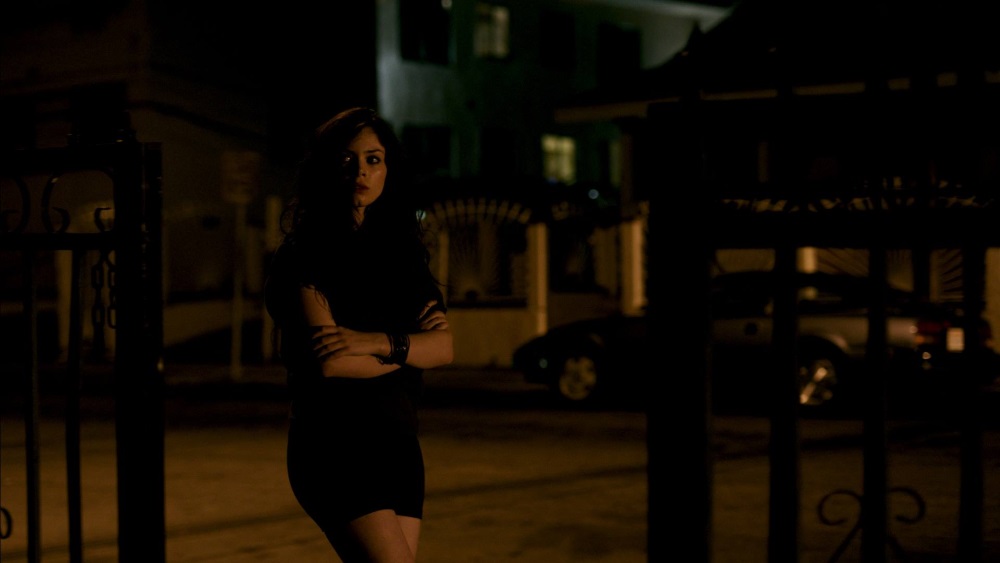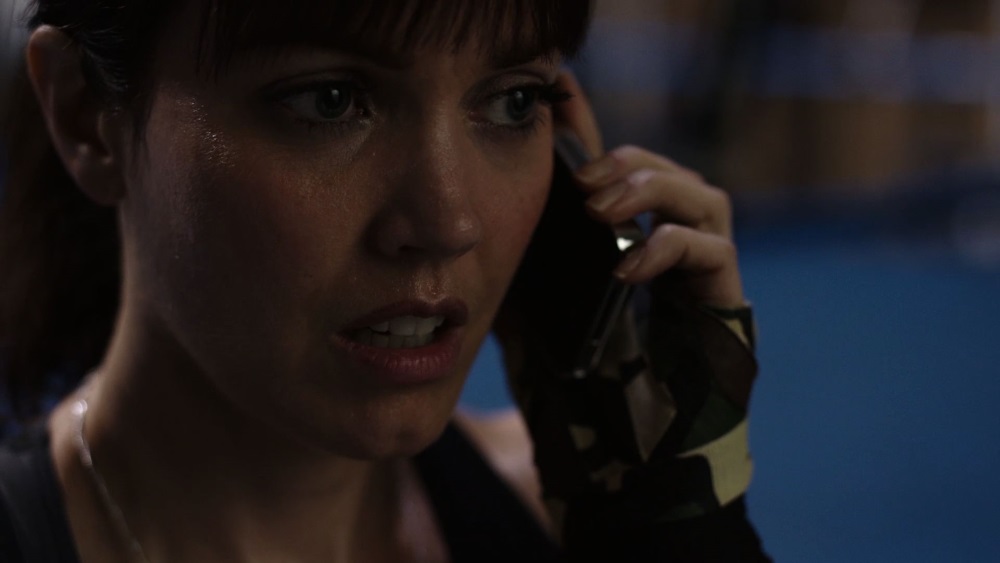The Night Stalker, the fourth feature by Seattle-based filmmaker Megan Griffiths, is skipping theaters almost entirely to premiere on the Lifetime Network and stream on Lifetime Movies, their online subscription service.
That wasn’t always the plan. The film was made as an independent feature with the intention of a theatrical release. “You like the idea of having it on a large screen,” says Griffiths, a Seattle-based filmmaker who grew up in Southern California during the reign of terror of Richard Ramirez. But increasingly audiences are turning to cable, and VOD and streaming services, for their new movies. Many independent films arrive on VOD day-and-date with their theatrical debut.
The Night Stalker made its world debut at the Seattle International Film Festival on June 4 and began a limited theatrical run in Southern California theaters a week later, but for the rest of the country it debuts at 9pm on Sunday, June 12 on the Lifetime Channel and then becomes the newest addition to Lifetime Movies.
Griffiths discusses the trade-off, including the benefits, of releasing her new film to Lifetime, a channel with a great track record for supporting women filmmakers, in the second part of my interview with Megan Griffiths (part one is here).
Sean Axmaker: Tell me about the brief theatrical release for The Night Stalker. Is it only on Southern California?
Megan Griffiths: Yes. It’s opening in Orange County, which is an area where Ramirez had a lot of impact, and there’s a legacy to that there where a lot of people are familiar with him and interested in his story and we figured it made sense to bring the story back there for this limited theatrical release. We always wanted to get some sort of theatrical run but it is getting trickier these days.
SA: You shot this as an independent feature and I assume you always had your eye on a theatrical release.
MG: It’s funny because I always say that there isn’t anybody who got into film to have their movies watched on a phone or an iPad. You like the idea of having it on a large screen where it’s so immersive and you’re in the dark and no one’s on their phones or checking their E-mails during the movie. That’s really the way you want people to watch, where they’re focused and into it, and as soon as you leave the theater all that goes out the window and people watch in this half-registered way. Ideal world scenario is that everybody is riveted, you have their undivided attention, and we’re naturally moving away from that, which is kind of sad. I’ve been going to a lot of screenings at SIFF and marveling at how full every screening has been and how much there is still an audience that at least comes out once a year to fill theaters and watch movies. It doesn’t happen very often. I’ve had those experiences at festivals but I’ve almost never had the experience of a full theater even on an opening weekend for a movie just because of the nature of all the different competition for people’s attention.
SA: The big screen versus small screen is becoming a different equation. In the last couple of months we’ve had Confirmation, about Anita Hill and Clarence Thomas, and All the Way, about President Lyndon Johnson passing the Civil Rights Act, both made for HBO and the small screen because that kind of serious, adult subject matter is considered too uncommercial for the superhero-dominated big screen culture.
MG: Basically everything’s too uncommercial for theater screens today that don’t involve capes.
SA: And so a lot of films don’t get seen on the big screen outside of film festivals.
MG: Right. I struggle with it by also have to acknowledge that I watch a lot of movies that way too. I’ve probably gone out and paid for a movie in a theater three or four times this year, which isn’t very much. I’ve seen way more movies than that because I’ve been to a couple of different film festivals, but I watch a lot of things on Netflix too so I can’t really be too high and mighty about it. But yeah, it’s a fact of the world. Ultimately you want an audience and you take the audience however you can get the audience. So if it’s people watching it on VOD or, in this case, if it’s people watching it on Lifetime, they have a huge audience and that is probably more eyes on my film on the night of the premiere than I’ve had on any of my films in the theater. So it’s hard to begrudge it.
SA: Lifetime jumped in and picked it up before it had even gotten to the festival circuit.
MG: They were tracking it and we showed it to them towards the end of the edit and they jumped right in. It was a personal relationship that facilitated slipping it to them early.
SA: Did they ask for any changes or will the film that they show be the film that you made?
MG: It’s my film. They gave me a couple of notes that I thought were very good notes and incorporated them into both versions. There’s a TV version and a theatrical version because TV version has commercial breaks, as it must. So that’s really the only difference, one has these nine commercial breaks and the other is a solid theatrical experience, and that is what will be on their VOD channels too. If they’re not watching it on live television, they’ll be watching the uninterrupted version.

Chelle Sherrill in Megan Griffith’s ‘The Night Stalker’
SA: Lifetime has been a lot more aggressive about picking up movies and developing their own original programming. They picked up Grace, the Cannes opening night film a couple of years ago, and gave it its American premiere, but they have also been supporting women filmmakers and their stories for original movies and other productions, including films directed by Diane Keaton, Agnieszka Holland, Mary Harron, and Angela Bassett.
MG: It’s true. Their statistics for supporting women in the director’s chair is far above the industry norm so that’s for sure something I was looking at in this collaboration. They have such an entrenched female-dominant audience and they serve that audience and they have a rabid fan base. They really are one of the few companies that has been making that their focus for as long as they have, and now a few more people are moving in that direction. They are embracing up and coming female filmmakers and female-centric stories and now they are moving into more award worthy content.
On set we had a 50/50 male/female crew and almost entirely all female department heads, which was an intentional move. I wanted to mention that because I was really proud of that. We had a really diverse cast and crew and I felt good about that because I rail about that a bit, especially the lack of work for women in this industry. I put my money where my mouth was on this one and met and worked with some pretty amazing, talented ladies.
SA: I assume that also has an effect on how stories are told. Pretty much every film about a serial killer is made by a man, making a film about a man murdering women because of a different understanding of the power dynamic of a man preying upon women.
MG: It’s funny because I agree, and that’s why I think it’s so important that a more diverse group of voices get to tell stories because every individual has a different take on things and it’s informed by gender and where you come from and your ethnicity and your wealth and your socio-economic status. If you don’t have voices from across the spectrum telling stories, it’s so limiting and it really does ultimately feel like rehashing the same thing. I’d like to think that this film is a different film than it would be in anyone else’s hands.

